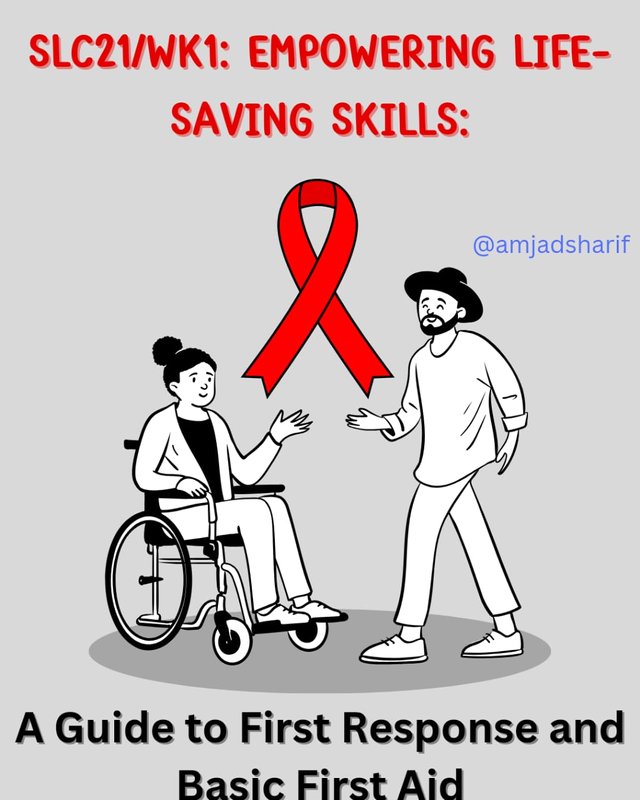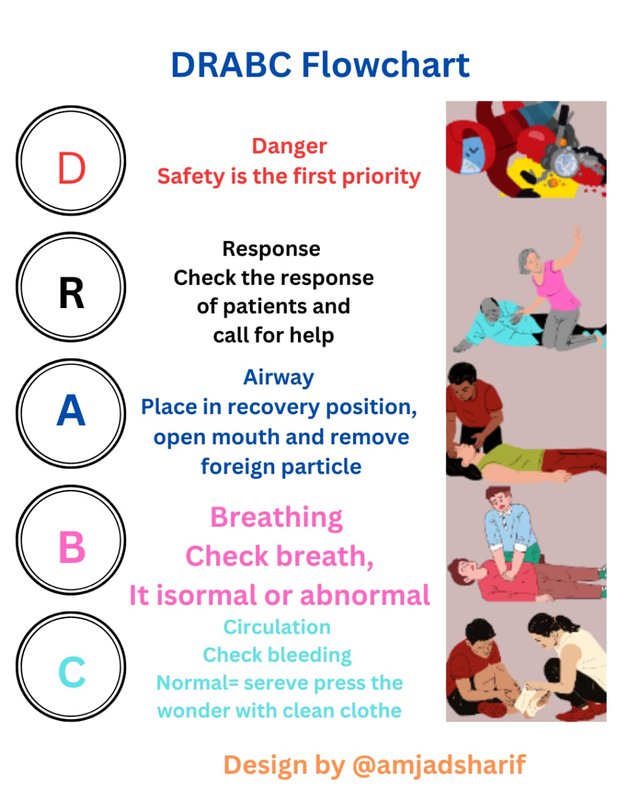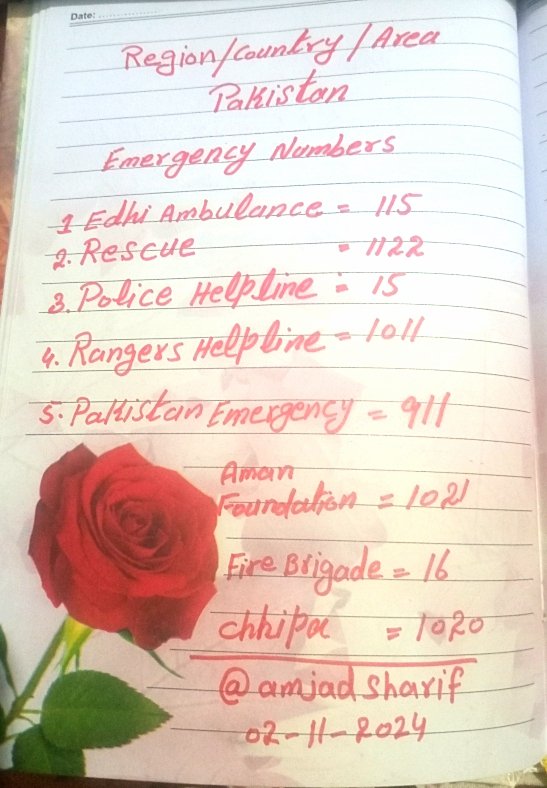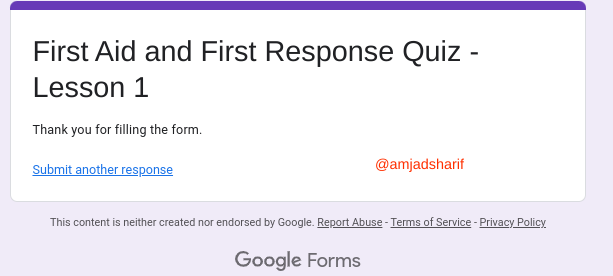SLC21/WK1: Empowering Life-Saving Skills: A Guide to First Response and Basic First Aid
AssalamuAlaikum & Greetings Everyone!
AssalamuAlaikum & Greetings Everyone!
I am glad to see that SLC21/WK1 started and we can participate in it. Thank you, teachers, @abdu.navi03, and @huzaifanaveed1 for Comprehensive Topic A Guide to First Response and Basic First Aid

Q.1 - Share your any experience of your life, in which you faced the emergency that could be handled by your own only if you know the basic first response skills.
Witnessing the Accident
It has happened that I met an accident one evening while coming back from work at a particularly congested junction. There was a situation in which the car had developed a problem, causing the driver to take it off the road where he rammed it into a tree according to the police report the driver was seriously injured. Everyone went running around trying to know what could be done in the meantime.
Taking Immediate Action
Immediately, I went over to him and saw that apart from being dazed he had quickly spurt out blood from the forehead. Like most people, I had no formal medical training but a few elementary tips on the first response that I had read. I looking for someone who could call for an ambulance while I used the clean cloth from my car to apply a little pressure on the wound to reduce bleeding.
Calm Down
I asked the driver if he was alright and to avoid moving around to avoid a worsening of his injuries. This kept him calm until assistance was sought from the professionals. What I was able to do with the little skills that I had I was able to offer some help during a crucial period.
Educational Theme for First Aid Readiness
In particular, I was able to learn such important lessons as the benefits of possessing at least some amount of knowledge regarding basic first aid response. Since then, I tried to get more information on first aid as I realized that even basic actions like stopping the bleeding and comforting might prove useful during emergences.
Q.2 - Imagine you are walking back home, when you witness a road traffic accident between a car and a motorcycle, and the motorcyclist is lying on the road, not moving. There’s some bleeding from his leg, and he appears to be unconscious. You being the first responder, how will you manage this scenario?
Evaluate the environment and safety(Environment – Safety)
When seeing the situation marked with an accident, I would also get closer, but doing so carefully and paying most attention to the current traffic on the road. I would approach the badly injured motorcyclist and avoid shifting him in any way, which may exacerbate spine injuries.
The Third Direction morally involves checking for Responsiveness, as well as maintaining an eye on Breathing, p.148
In order to assert myself and make sure that he can pay attention and listen to me I will tap him on the shoulder and ask if he can still hear me. If he does not reply I would ask him whether he is still alive and if his heart is still beating or not.. If he is breathing I would open his airway by tilting his head backward but I would not move him anymore.
Control the Bleeding
Because there is blood that can be seen coming from his leg, I would manage it. I will look either for a clean rag or any piece of cloth that I would have to put pressure on the bleeding wound. If the bleeding is drastic I would fashion a temporary tourniquet and tie it gently above the site that is bleeding.
Call Emergency Services
During basic care assignments, I would inform the emergency services and describe the location and status of the person who has been injured. I would also approach any other person observing the event for assistance in managing convoys away from the scene to avert other accidents.
Track and Assist Till Assistance comes
In case professional help does not come I would remain with the injured man controlling his breathing and bleeding and speaking calmly to him if he comes to. Being composed and vigilant would nicely fit the purpose of promoting his healing.
Q.3 - Draw or Create an engaging illustration/flowchart of DRABC protocol (Try to be creative and don't forget to add your username on the illustration)
Here is an illustration/flowchart of the DRABC protocol.
D = Danger
R = Response
A = Airway
B = Breathing
C = Circulation

Q.4 - Write down the numbers of emergency services of your country/area on a paper (Minimum 5, maximum 10)
Here are 8 emergency numbers written on paper.

Q.5 - Complete the quiz based on this week's lesson to test your understanding. Access the quiz through this Link
I have filled the form and completed all answers.
.png)
I invite @sojib1996, @shabbir86 and @patjewell to participate in it.
Thank You

X promotion
https://x.com/AmjadSharifWat1/status/1852765509235687555?t=10G-IV4PofX7_S3m1UL9EA&s=19
Student Name: @amjadsharif
Time of checking: Within 24 hours of the homework
Overall Grade: [6.8/10]
Plagiarism Check: Pass
AI Use: No
General Feedback:
Your effort in this assignment is commendable, especially your creative approach to the visual representation. However, there is a need for clarity and depth in your explanations. Ensure that you thoroughly understand the material and apply it effectively in real-life scenarios. Keep striving for improvement in your next submissions!
Thank you.
Regards,
@abdu.navi03